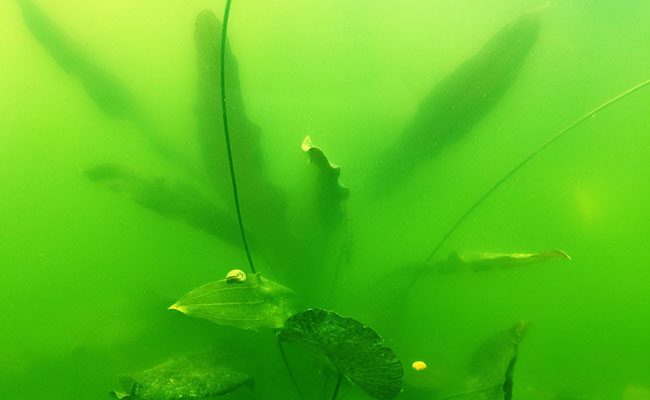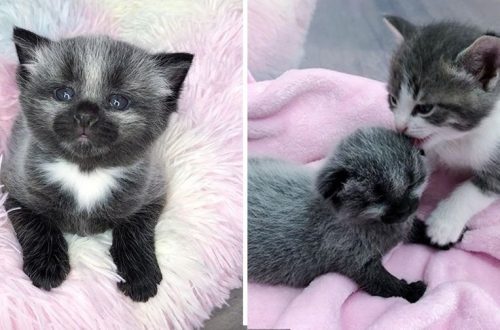
The water in the aquarium turns green: why and how to deal with it
Many lovers of aquarium fish could notice this phenomenon: the water begins to turn green, the whole appearance deteriorates, and an unpleasant odor may also appear. What is the reason? Why does the water in the aquarium turn green? And how to deal with it? This is what will be discussed in this article.
Contents
What are the reasons for the color change?
When the water in the aquarium begins to turn green, many connoisseurs say that the water has bloomed. This process is associated with an increase in microorganism, and more specifically euglena green. It got its name due to the presence of chloroplasts in its composition, which gives it such a color.
The reasons for the rapid growth of colonies of this microorganism may be different. We will name only the main ones:
- excessive lighting. If the aquarium has too strong a backlight or it is placed in direct sunlight, the water starts to heat up. As a result, the most favorable conditions for the reproduction of euglena are created.
- dirty water in the aquarium. If the filters do not work well, then the water begins to become contaminated. As a result, there is a lot of food for microorganisms, and they begin the rapid growth of their colony.
- improper feeding. Many novice aquarium lovers try to give their pets more food. But the fish may not overpower large volumes. As a result, organic residues accumulate at the bottom, and thus create a food base for the propagation of euglena.
In almost all cases, the reason that the aquarium water turns green is improper care. As a result of poor lighting or pollution, microorganisms begin to multiply. But all these troubles can be easily and quickly dealt with.
How to fix the situation?
When asked why, we answered. Now it’s time to talkabout ways to fight with this trouble. If the water in the aquarium began to turn green, then this should be dealt with immediately. And this is not related to the spoiled appearance (although this is also important). First of all, spoiled water can harm all inhabitants of the aquarium. First, the level of oxygen concentration in the water decreases. Secondly, microorganisms can clog the gills of fish, and thereby worsen their condition.
In order to give the water its former appearance, you can use one of the following methods:
- The first step is to properly adjust the lighting. It is better to use a backlight with the ability to adjust its brightness. In this case, at the beginning of “blooming” you can reduce the illumination. You should also protect the aquarium from direct sunlight. It is they who most often become the causes of “bloom”. From a window located on the sunny side, the aquarium should be set aside at least one and a half to two meters. Experts recommend limiting daylight hours for your underwater inhabitants to ten hours in winter. In the summer season, the illumination period is increased to twelve hours.
- if the water in the aquarium has already begun to turn green, you can darken it. As a rule, a few “dark” hours will be enough for microorganisms to stop their rapid reproduction.
- you can populate the aquarium with animals that will eat harmful algae and microorganisms. These include snails, shrimps, catfish and daphnia. The latter can also be food for some aquarium fish. Therefore, daphnia must be launched in larger numbers than other pets.
- if the water in the aquarium began to turn green, then you should think about completely replacing it. Most experts do not recommend doing this. The aquarium has its own microclimate, and changing the water can harm it. But if such a nuisance happened, then the balance is already upset anyway. Water changes do less harm than multiplying microorganisms. But doing this procedure, you need to check the operation of filters and other aquarium equipment. Everything must work correctly, otherwise the water will turn green again.
- carefully keep track of the amount of food. If you notice that the fish do not eat the entire volume, then you need to pour less. Otherwise, the residues will accumulate at the bottom and become food for microorganisms.
- special powders are commercially available that destroy microalgae. But they must be added with caution, observing the dosage. There are many such substances on the market. The most common is streptomycin powder. Its dosage is 3 mg per 1 liter of water. Such a solution is introduced through a filter, while the powder is harmless to the “legitimate” inhabitants of the aquarium.
General aquarium care tips
If you follow the lighting, give the right amount of food and check the operation of aquarium equipment, the liquid will always be the right color. In this case, nothing will threaten waterfowl pets.
Periodic cleaning is required. From the bottom and surface is necessary remove leftover food and other accumulated organic matter. To make it convenient to do this, you need to properly position the soil. The bottom should slope towards the front wall, especially for large aquariums.





